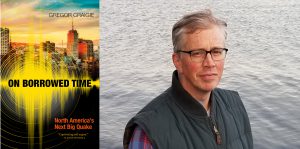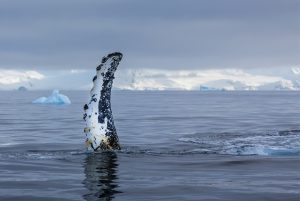
Science & Tech
How Canada is preparing for the next big earthquake
The last megathrust earthquake to strike Canada was in 1700, and the clock is ticking. How we’re preparing for the impact.
- 2809 words
- 12 minutes
This article is over 5 years old and may contain outdated information.
History

When an earthquake happens in today’s world of 24/7 connectivity, details spread almost instantaneously. This is useful information for rapid response teams, but when it comes to preparing for future quakes, understanding past disasters is crucial.
Experts agree the Pacific coast of North America is long overdue for a significant earthquake, so scientists are revisiting the last ‘Big One:’ the great Pacific northwest earthquake and tsunami, which occurred 316 years ago.
Until recently, the so-called Cascadia quake has been a compelling mystery. Historical records show that on a winter night in 1700, a tsunami suddenly struck the coast of Japan. No one had felt a tremor, so where did the wave come from?
The answer: from the sparsely populated Pacific northwest coast of North America, where a massive megathrust earthquake had struck hours earlier.

By comparing the rings of dead trees in the swampy “ghost forests” of Oregon with living trees, researchers at the US National Weather Service Pacific Tsunami Warning Center (PTWC) were able to determine that the trees died in the winter of 1699-1700 when the coastline from northern California to Washington State suddenly dropped by one to two meters, allowing seawater to flood inland. That much motion could only have been caused by a powerful earthquake similar in magnitude to the quake that struck Alaska in 1964.
Such a quake would have caused intense shaking for five minutes or more, and the resulting tsunami would have crossed the Pacific Ocean — thus explaining the “orphan tsunami” described by merchants and villagers in Japan.
Oral stories passed down through the generations by aboriginal inhabitants of the Pacific northwest also played an important role in helping to date the Cascadia quake.

A recurring theme among native populations from western Vancouver Island and northern Washington is of an epic struggle between Thunderbird and Whale, supernatural beings whose ferocious battles cause the ground to shake and the seas to rise. More literal anecdotes describe houses swept away, rivers changing course and trees draped with debris.
Last week, the PTWC released an animated simulation of the Cascadia tsunami created with the same real-time forecast model they use to issue tsunami warnings today. The model shows the progress and severity of the waves over time and the corresponding increase in danger to coastal areas.
The simulation highlights the incredible challenges governments and first responders will face when the next ‘Big One’ hits the west coast: within minutes of the quake, low-lying areas that may have already sustained significant damage will also have to brace for a severe tsunami.
Are you passionate about Canadian geography?
You can support Canadian Geographic in 3 ways:

Science & Tech
The last megathrust earthquake to strike Canada was in 1700, and the clock is ticking. How we’re preparing for the impact.

Environment
British Columbia, Washington State and Oregon sit on a fault line that is capable of producing some of the strongest earthquakes on the planet. A new book reveals it’s not a matter of if, but when the next “Big One” will strike.

People & Culture
In the April issue of Canadian Geographic I wrote about Stratford, Ont.'s three decade struggle to repurpose the giant, neglected railway…

Environment
Ten years after the release of her seminal book Sea Sick, Alanna Mitchell again plumbs the depths of the latest research on the health of the world’s oceans — and comes up gasping